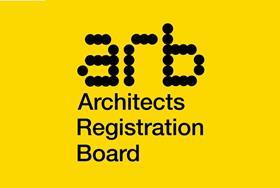ARB launches new EDI strategy aimed at widening access to the profession
The Architects Registration Boardhas published its new equality, diversity and inclusionstrategy for 2025 to 2027, outlining a plan that seeks to improve access to the profession and raise standards around workplace culture and conduct.
The strategy sets out four headline goals. The first two are focused on ARB’s regulatory remit: becoming a more inclusive organisation and increasing access to the register for underrepresented groups. The other two seek to support sector-wide change through collaboration, aiming to create more inclusive workplace cultures and end discrimination and sexual harassment in the profession.
According to ARB, the architects register does not yet reflect the diversity of the society it is meant to serve. The new EDI strategy was developed with support from Purpose Union, a consultancy specialising in social impact. The process included a review of ARB’s legal remit, as well as its internal policies and procedures, and an analysis of best practice from other organisations.
Purpose Union also held detailed consultations with key stakeholders, including the RIBA. The strategy is further informed by ARB-commissioned research into professional culture and misconduct in architecture, carried out by Thinks Insight & Strategy.
Source: ARBAlan Kershaw, chair of the ARB board
ARB chair Alan Kershaw said: “This strategy is a bold step toward building a profession that truly reflects the diversity of our society, and a profession where talent and ability, not background or circumstance, determine success.” He added that ARB was already acting on a number of the commitments set out in the document.
One of the first steps in the plan is a new research project to find out whether ARB’s recent changes to architectural education are helping more people enter the profession. The education changes removed the need to follow the traditional three-part qualification route and are intended to make it easier for people to qualify through different types of courses and career paths.
Other planned steps include more data collection on student demographics and attrition, a new survey of registered architects, and the development of an online resource hub to support those experiencing discrimination. ARB also intends to strengthen guidance through its Code of Conduct and convene a senior leaders’ taskforce to promote greater diversity in decision-making roles.
While some goals fall within ARB’s direct powers, the regulator acknowledges that others require broader collaboration across the sector. The strategy states that progress will depend on engagement from architectural practices, educational institutions and professional bodies such as RIBA.
Implementation of the strategy is set to begin in 2025. ARB said it does not expect all goals to be achieved within three years, but described the plan as a long-term commitment to reducing barriers to entry and progression across the profession.
#arb #launches #new #edi #strategy
ARB launches new EDI strategy aimed at widening access to the profession
The Architects Registration Boardhas published its new equality, diversity and inclusionstrategy for 2025 to 2027, outlining a plan that seeks to improve access to the profession and raise standards around workplace culture and conduct.
The strategy sets out four headline goals. The first two are focused on ARB’s regulatory remit: becoming a more inclusive organisation and increasing access to the register for underrepresented groups. The other two seek to support sector-wide change through collaboration, aiming to create more inclusive workplace cultures and end discrimination and sexual harassment in the profession.
According to ARB, the architects register does not yet reflect the diversity of the society it is meant to serve. The new EDI strategy was developed with support from Purpose Union, a consultancy specialising in social impact. The process included a review of ARB’s legal remit, as well as its internal policies and procedures, and an analysis of best practice from other organisations.
Purpose Union also held detailed consultations with key stakeholders, including the RIBA. The strategy is further informed by ARB-commissioned research into professional culture and misconduct in architecture, carried out by Thinks Insight & Strategy.
Source: ARBAlan Kershaw, chair of the ARB board
ARB chair Alan Kershaw said: “This strategy is a bold step toward building a profession that truly reflects the diversity of our society, and a profession where talent and ability, not background or circumstance, determine success.” He added that ARB was already acting on a number of the commitments set out in the document.
One of the first steps in the plan is a new research project to find out whether ARB’s recent changes to architectural education are helping more people enter the profession. The education changes removed the need to follow the traditional three-part qualification route and are intended to make it easier for people to qualify through different types of courses and career paths.
Other planned steps include more data collection on student demographics and attrition, a new survey of registered architects, and the development of an online resource hub to support those experiencing discrimination. ARB also intends to strengthen guidance through its Code of Conduct and convene a senior leaders’ taskforce to promote greater diversity in decision-making roles.
While some goals fall within ARB’s direct powers, the regulator acknowledges that others require broader collaboration across the sector. The strategy states that progress will depend on engagement from architectural practices, educational institutions and professional bodies such as RIBA.
Implementation of the strategy is set to begin in 2025. ARB said it does not expect all goals to be achieved within three years, but described the plan as a long-term commitment to reducing barriers to entry and progression across the profession.
#arb #launches #new #edi #strategy
·104 Views

